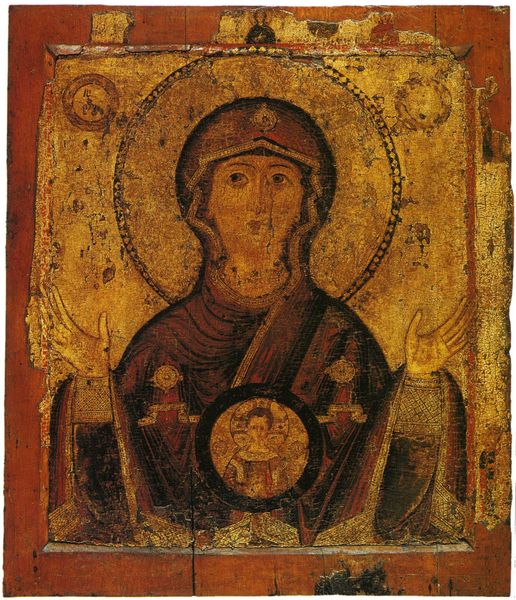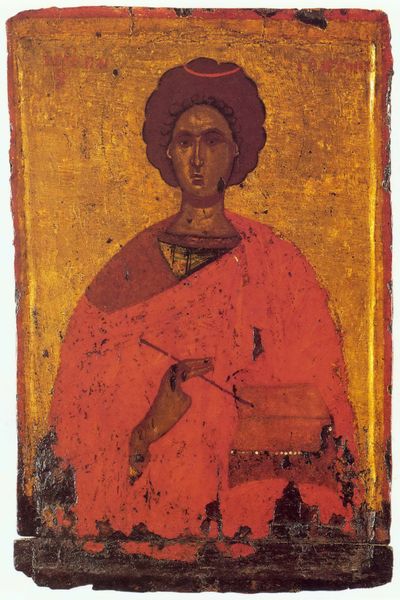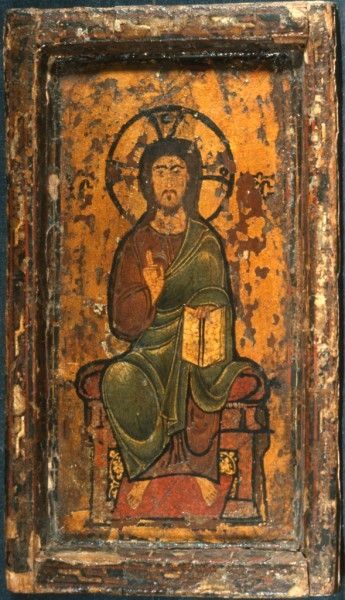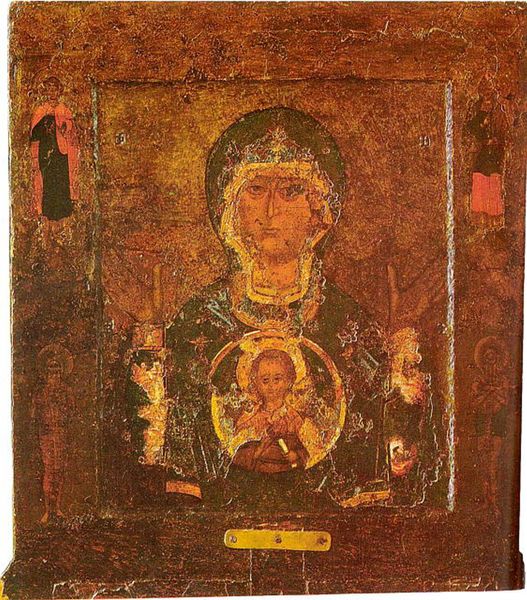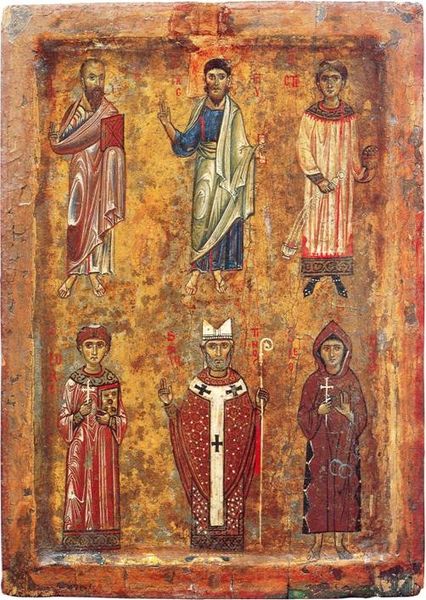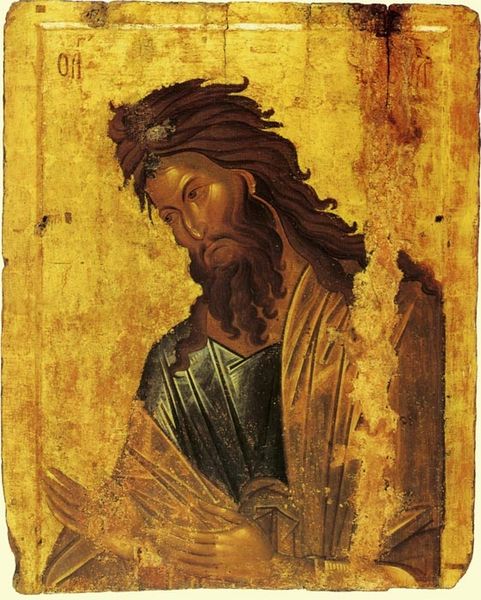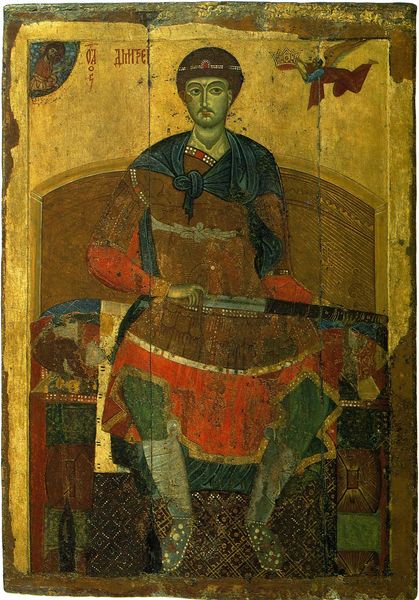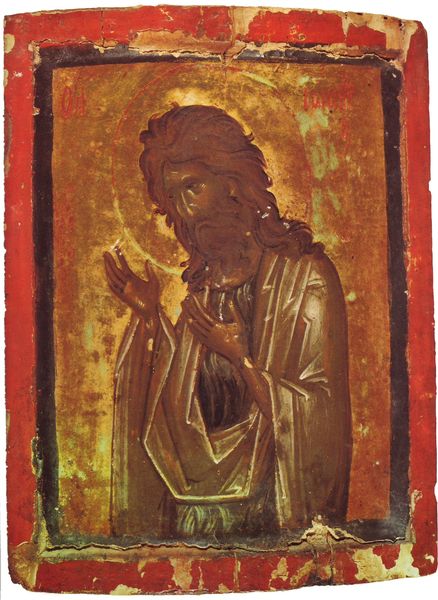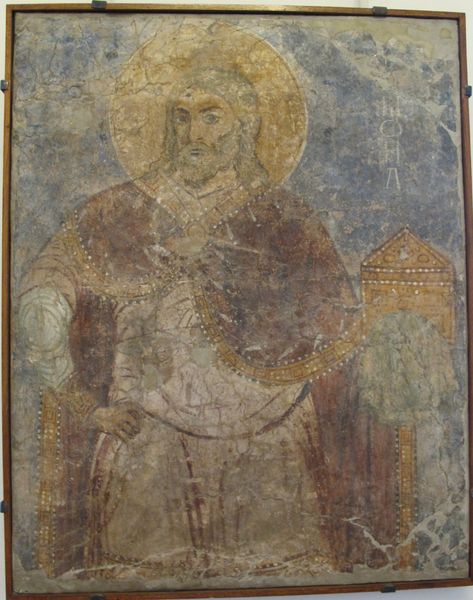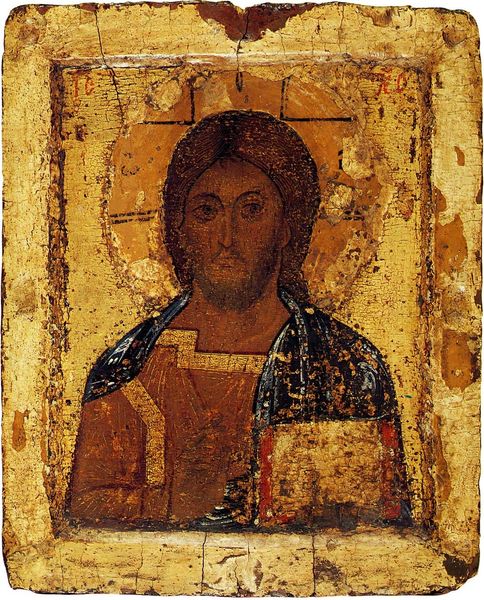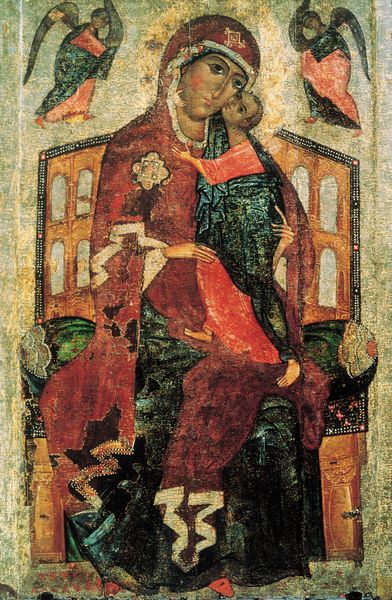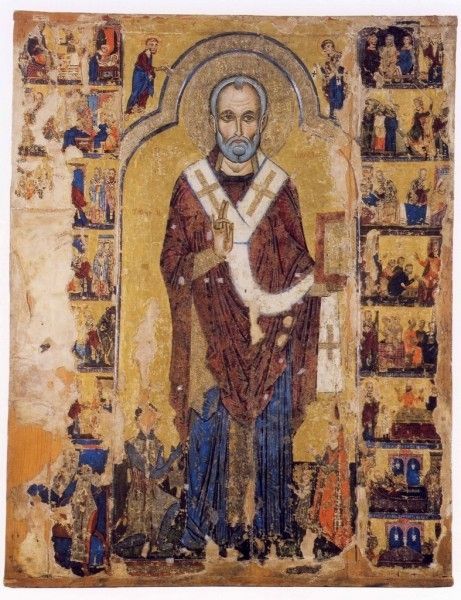
tempera, painting
#
portrait
#
byzantine-art
#
tempera
#
painting
#
figuration
#
naive art
#
history-painting
Copyright: Orthodox Icons,Fair Use
Editor: This is Saint George Diasoritos, a tempera painting from around 1450. The overall mood, despite the wear and tear, is very commanding. I'm particularly drawn to the almost geometric precision of his shield. What do you see when you look at this icon? Curator: Precisely that tension between geometric and organic form, between abstraction and figuration. The shield, a perfect circle, and the spear held rigidly upright contrast the soft curves of the saint’s face and the flowing drapery. The lines here aren’t just representational; they are structural. Notice how the artist has used line to create a sense of depth and movement, despite the two-dimensional nature of the panel. Editor: It's almost as if the artist is using different visual languages for different elements. Why is Saint George such a popular subject for icons? Curator: Within the formal qualities of the work itself, consider Saint George’s inherent symbolic significance: his triumph over evil. This could also speak to why Byzantine art favors symbolism, communicating narratives through signs, which are rendered by lines, planes, light, and shadow, aiming for transcendence beyond the artwork itself. Does that chime with you? Editor: Definitely. Thinking about those symbolic geometric elements as transcendent planes gives me a totally fresh take. It almost creates a bridge to understanding naive art's intentions. Curator: Indeed, the ‘naive’ or primitive rendering only heightens its emotive impact through raw visual articulation! I am pleased you note its significance.
Comments
No comments
Be the first to comment and join the conversation on the ultimate creative platform.
